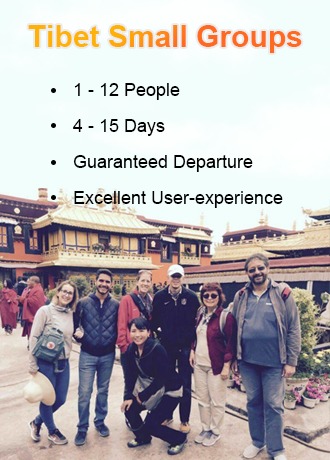Tibetan Houses
- by Catherine
- Last Updated: 2023-06-29
Tibetan traditional houses, like other cultural forms in Tibet, also have their own unique characteristics. There are various types of Tibetan houses, such as the castle-like houses in the southern valley, the tents in the northern pastoral area, the wooden buildings in the forest area of the Yarlung Zangbo River Valley, and the cave dwellings on the Ngari Plateau, which all have strong ethnic and regional characteristics.
While paying attention to protection against cold, wind and earthquakes, Tibetan houses also adopt methods such as setting up ventilation, light wells and skylights to better solve the impact of unfavorable factors such as climate and geography on production and living and achieve the effects of ventilation and heating.
Types of Tibetan Houses
There are mainly two featured residential houses of Tibet, Castle-like houses and tents. The formation of residential settlements in agricultural and pastoral areas is mostly centered on monasteries, freely distributed and scattered with each other, forming a pattern of disassociation.
Castle-like Houses
The most representative dwellings of Tibetan are castle-like houses. It's called tnkhar or rdzong-mkhar in Tibetan, originally meant fort. This kind of house is mostly built on steep rocks and towering, making it easy to defend and difficult to attack. The houses are mostly stone and wood structures, with a dignified and stable appearance as well as a simple and rough style. The outer walls get shrunk upward, but the inner walls of those built against the hill are still vertical. The castle-like house has the characteristics of being solid and stable, tightly structured, and neat corners, which is not only good for preventing wind and cold but also defending against theft.
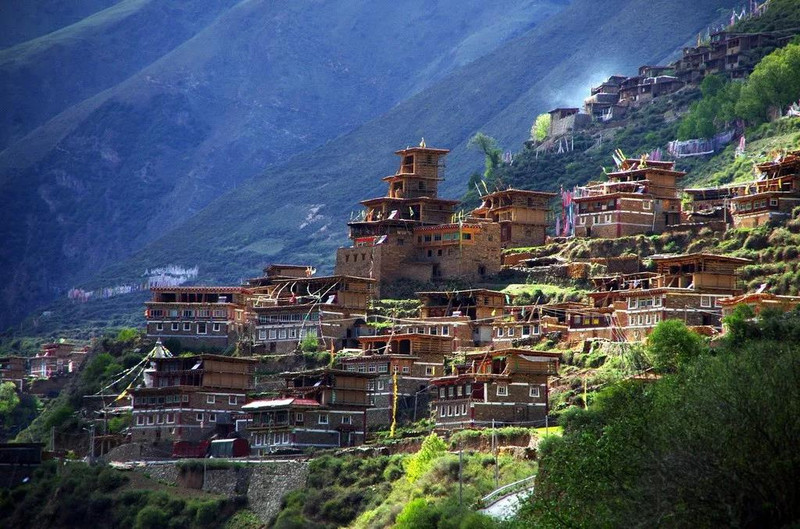
Castle-like houses are generally two-story structures. The upper floor is the living area of people, and the ground floor is the livestock area and storage room. The small windows and narrow doors are commonly used in house construction to help keep out the wind and cold. If there is a third floor, it will be used as a sutra hall and terrace.
Colorful decorative paintings are painted on the stigmas and beams of the house. The rooftop of the castle-like house is basically flat. On the surface, it's firstly paved with naturally formed semi-calcified lime-mixed clay. After adding water and beating for a long time, it's smeared with ghee or elm sap. After drying, it's hard as stone and smooth as glass.
Tents
Tents are the main form of residence of people in pastoral areas such as Nagqu and Ngari. Tibetan tents are a special architectural form to adapt to the nomadic lifestyle in pastoral areas for settling down along those places with adequate grass and water.
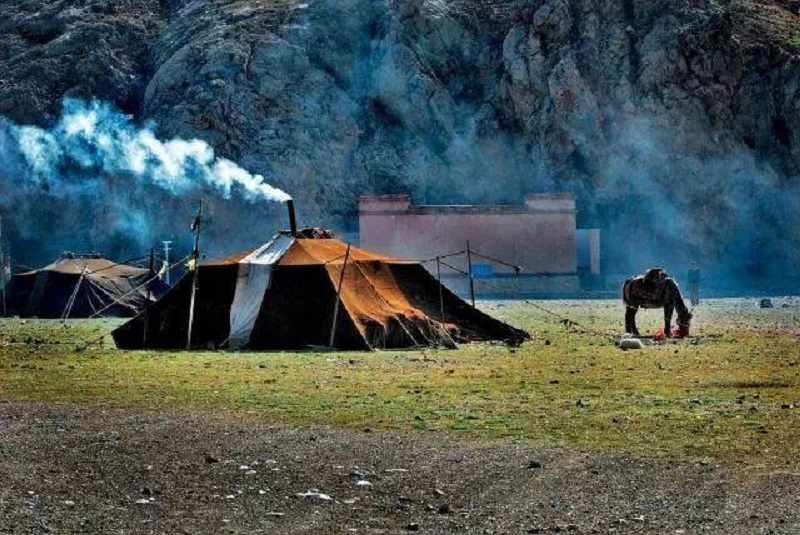
It is common for herders to use yak hair tents as their shelter. The herdsmen first spun threads from yak hair, then weave it into the thick cloth, with a thickness of about two or three millimeters, and then sew the cloth into a square or rectangular tent. The tent is supported by wooden poles, about 2-meter high. All around of this tent is attached by yak hair ropes and fixed on the ground. On the main ridge of the tent, there's a slit about 15 cm wide and 1.5 meters long to let out smoke and heat when opened for keeping ventilated and warm; and to protect from wind and rainwater if covered.
The interior of the tent is built with low walls all around, 40-50 cm high, with grass mud or adobe, on which barley, butter bags, and cow dung are piled. The furnishings in the tent are simple, with a fire stove in the middle, and a Buddha image enshrined behind the stove and sheepskin rugs spread on the surrounding ground for sitting and relying on. The tent is easy to set up, dismantle and carry away by one or two yaks.
Tibetan Houses in Regions
After a long period of evolution, while adapting to the natural conditions such as the climate and geography of the plateau and combining ethnic living habits and cultural traditions, there have formed an architectural form featured in economically applicable, suitable for local conditions and obtain material from local sources.
Wooden Buildings of Southeast Tibet
Southeast Tibet refers to Lhoka and Nyingchi. The folk house in the forest area of southeast Tibet has a unique style. Wooden buildings and bamboo buildings with wooden frame structures are mostly used. For the wooden buildings, the entire wall instructions, floor surface, and roof are all made of wood as building materials. People go up and down through the wooden stairs in the veranda. The roof is densely covered with wooden shingles and pressed with stones to stabilize it. The space under the wooden building is open for tethering livestock. Above the wooden building are the rooms and warehouses. The living room in the center is connected to the external veranda through a small vestibule, and there are warehouses on both sides of the living room.
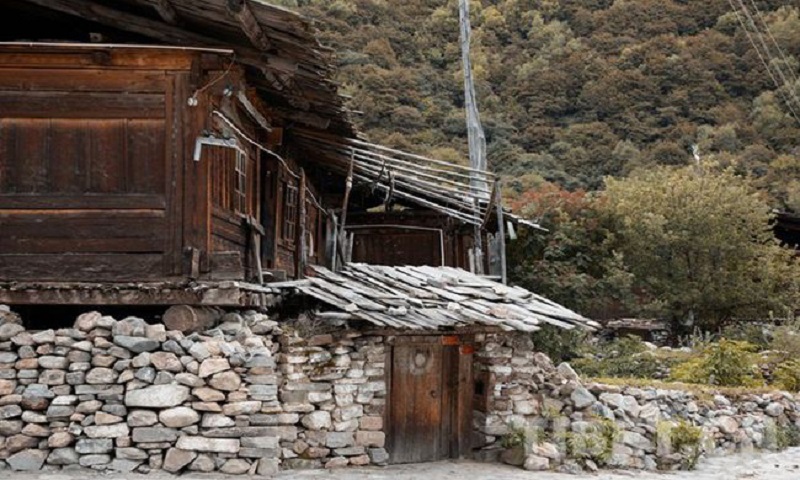
Cave Dwellings of Northwest Tibet
Northwest Tibet mainly refers to the Ngari region. The climate in this area is relatively harsh, and common building resources such as stone and timber are seriously lacking. Historically, the residential buildings in this area developed slowly and were very rudimentary. In the Zanda and Purang areas, people used the unique local soil forest geological conditions and created the most distinctive cave dwellings. On the basis of the cave dwellings, they later developed houses and cave combined dwellings. In the valley or the surrounding area where the commodity trade is more developed, due to relatively abundant resources, there're also some castle-like houses. Most are two-story buildings. It is said that the site selection of the cave dwellings in Ngari is based on the mountain. On the one hand, the soil quality of the soil forest is more suitable for digging caves; on the other hand, the terrain is condescending and more defensive, which is good for resisting the harsh winter weather and keeping safe. The point is that there're gales on the plateau. Choosing a mountainous area is more conducive to avoiding the cold wind and getting better sunshine.
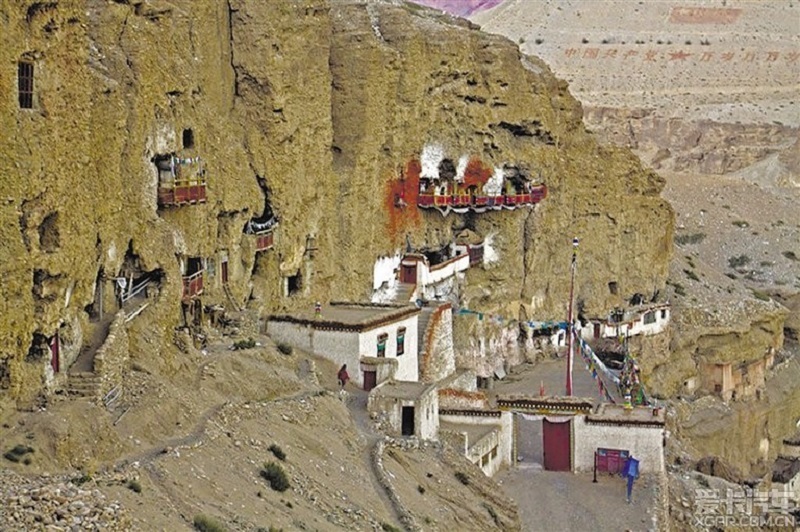
The plane of house caves have square, round, rectangular, and other shapes, and most of them are 4m×4m square shapes. The cave houses are 2 to 2.2 meters high and have flat-topped arches. On the Tibetan Plateau, caves are a relatively rare type of dwelling.
Tents in Pastoral Area of Northern Tibet
Northern Tibet refers to "Chiangtang" of Nagqu, which means this north vast plain. There's high altitude and harsh climate, with an average annual temperature below zero degrees Celsius. As a result, the ecological environment of this area is very fragile. People living here have no ability to protect and nurture the pastures, so they have to migrate and use the available pastures in turns, forming a nomadic lifestyle on the prairie.
In the process of changing seasons and constant migration, the relocatable yak tent has become the most suitable way of living.
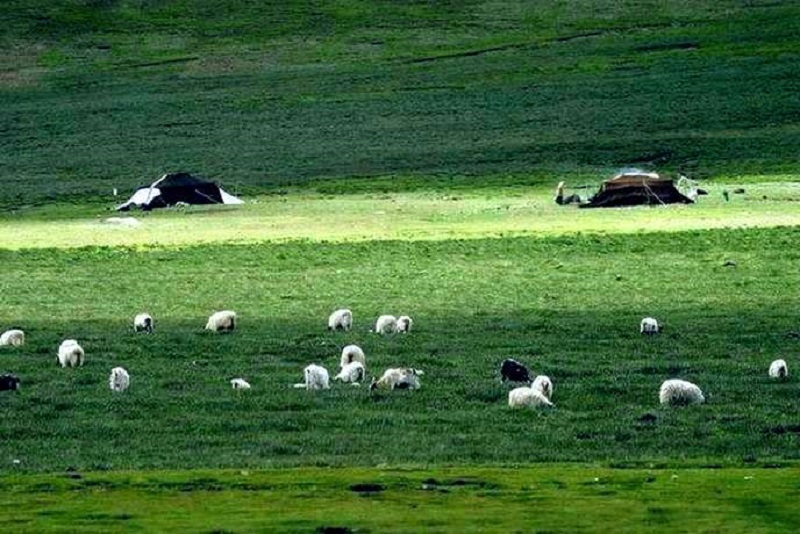
Castale-like houses in Pastoral Areas
Besides Tibet, many Tibetans live in Qinghai, Gansu and western Sichuan. In order to adapt to the climate and environment on the Tibetan Plateau, most traditional Tibetan dwellings are castle-like houses since the past fort buildings have a great influence on the formation and development of Tibetan dwellings, eg. earth and stone structures, flat roof style, etc. The current Tibetan dwellings have evolved on the basis of castle-like houses. The colors of the castle-like houses are simple and coordinated, basically using the natural colors of the materials and painting the wood parts with dark red. The walls of the entire building are thick-grounded and thin-topped, and the shape is large in the bottom and small on the top.
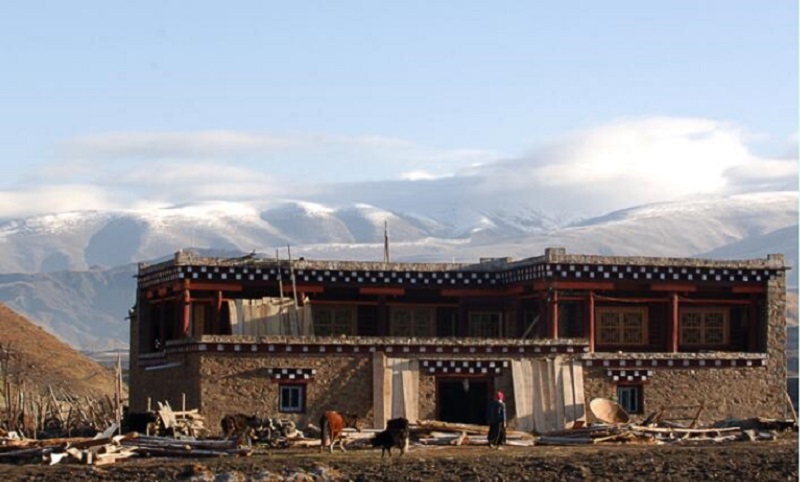
Due to the different natural conditions in various regions, the style of the Tibetan houses varies in regions but most are castle-like houses. The houses in the prairie farming area are first built with mud into walls and then partitioned with wooden boards to form many rooms. The ground floor of the house is generally for raising livestock and collecting forage, cow dung, and other things. On the second floor, there are the living areas such as the kitchen, bedrooms, and places for placing furniture. The third floor of the house is mostly a sutra-chanting hall, which is neat and clean. And it is often used as a reception room to receive distinguished guests to show the house owner's respect, though most poor people have only two floors.
Related Articles
- Top 5 Himalayan Valleys in Tibet
- Nomad Tents at Everest Base Camp
- Sichuan Tibet Highway - Southern and Northern Routes
- House of Shambhala
- Tulin Castle Hotel
- Drak Yerpa
- Saga Hotel
- Tibet and Nepal
- Nyangchu Manor House Hotel
- Tibetan Culture
Email response within 0.5~24 hours.


